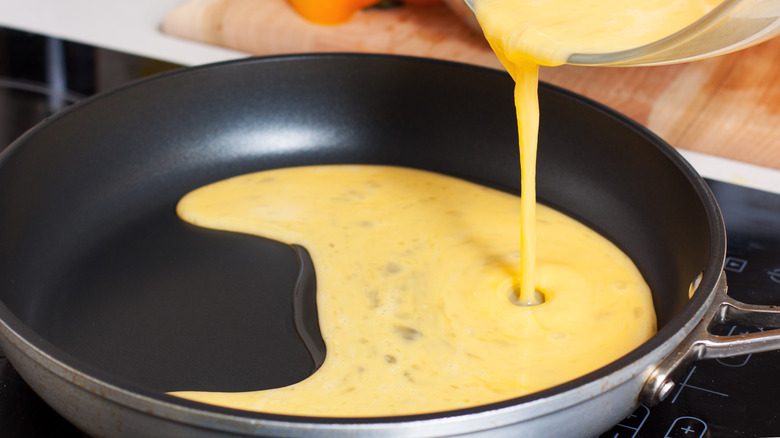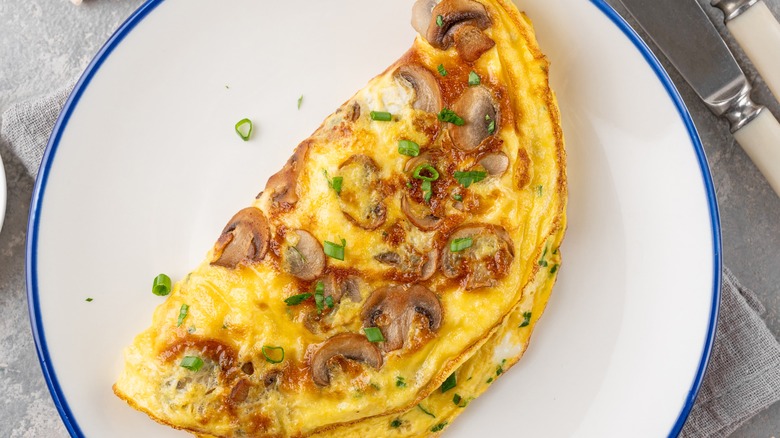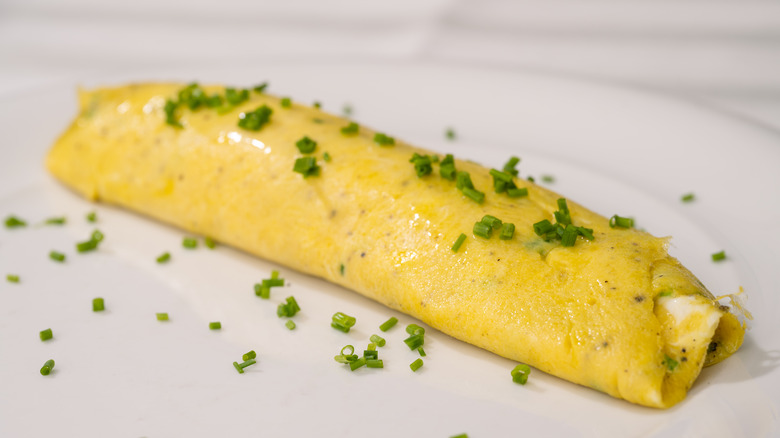The Key Difference Between French And American-Style Omelets
Omelets have been making breakfast classy for centuries. Their fluffy, folded, cheesy goodness gets loaded up with fixings at fancy hotel buffets, graces the overpriced menus at brunch spots everywhere, and makes a humble appearance in our home kitchens.
There are two main styles of this breakfast item: French and American. Although both styles of the egg dish are made with essentially the same ingredients — eggs, butter, and salt — each method produces a different masterpiece. There's one key difference between the two (aside from the fact that the French spelling is omelette, while the American spelling is omelet). It all comes down to texture.
French-style omelettes are extremely light and fluffy, with a soft texture and eggs that are almost gooey. American-style omelets, which is the style you're likely most familiar with eating and making, tend to be denser and are marked by a slightly browned, outer crust. So, how is this vast difference in texture achieved?
American omelet: the technique behind the texture
Let's start with the American-style omelet. The first step is no surprise: Whisk your eggs together, and add them to a heated, buttered pan. But the key to the American technique is to let the eggs set. To do this, leave them undisturbed in the pan over a fairly high heat, letting them cook until they form a crust.
American omelets are all about the fillings, which you can add at pretty much any time in the process (depending on what they are, you can even cook them in the pan before you pour in your eggs). Once your fillings — which can be anything from meat to veggies to cheese to all of the above — are packed in, the final step is to fold the omelet in half with a spatula.
The final result of an American omelet will be a lightly golden brown half-moon that's typically stuffed with several ingredients, a bit crispy on the outside with softer eggs on the inside. It'll be fairly dense, and in typical American fashion, large and filling.
French omelette: the technique behind the texture
Making a French omelette, on the other hand, requires a little less cooking time and a little more skill. The first step of the process is the same: Pour your whisked eggs into a heated pan with butter. But you want lots of butter — it's more of an ingredient here than a cooking fat.
This is where things start to shake up (literally). Rather than letting the eggs set, the French technique requires a constant shaking and moving around of the pan, gently stirring the eggs and tilting them around until they slowly come together but don't fully set or harden (or become scrambled eggs). From there, turn down the heat and gently roll the omelette on top of itself.
A French omelette will be presented in this rolled cylinder shape with the eggs just barely set, and much softer and lighter in texture. While you can add some minimal fillings, traditional French omelettes aren't served with any fillings at all, letting the fluffy egg and butter shine.



